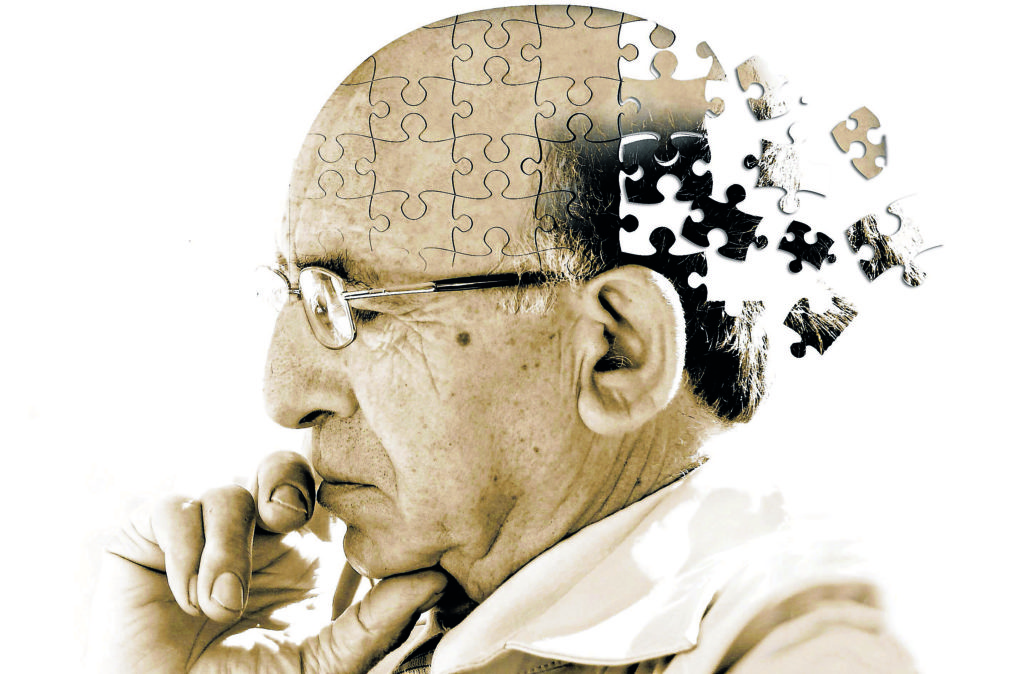Alzheimer’s disease is a degenerative disease that causes a progressive decline in cognitive function and memory. Gradually, the destruction of nerve cells occurs in areas of the brain related to memory and language. Over time, the person has increasing difficulty in storing the events to recognize objects and faces, to remember the meaning of words, and to exercise judgment. Generally, symptoms appear after age 65 and prevalence increases sharply with age. However, contrary to popular belief, Alzheimer’s disease is not a normal consequence of aging.
Alzheimer’s disease is the most common dementia in the elderly; it represents about 65% of dementia cases. The term dementia includes health problems marked by an irreversible decrease in mental faculties. Alzheimer’s disease is distinguished from other dementias in that it evolves gradually and mainly affects short-term memory, in its beginnings. However, the diagnosis is not always easy and it can be difficult for doctors to differentiate Alzheimer’s dementia ‘Lewy body’
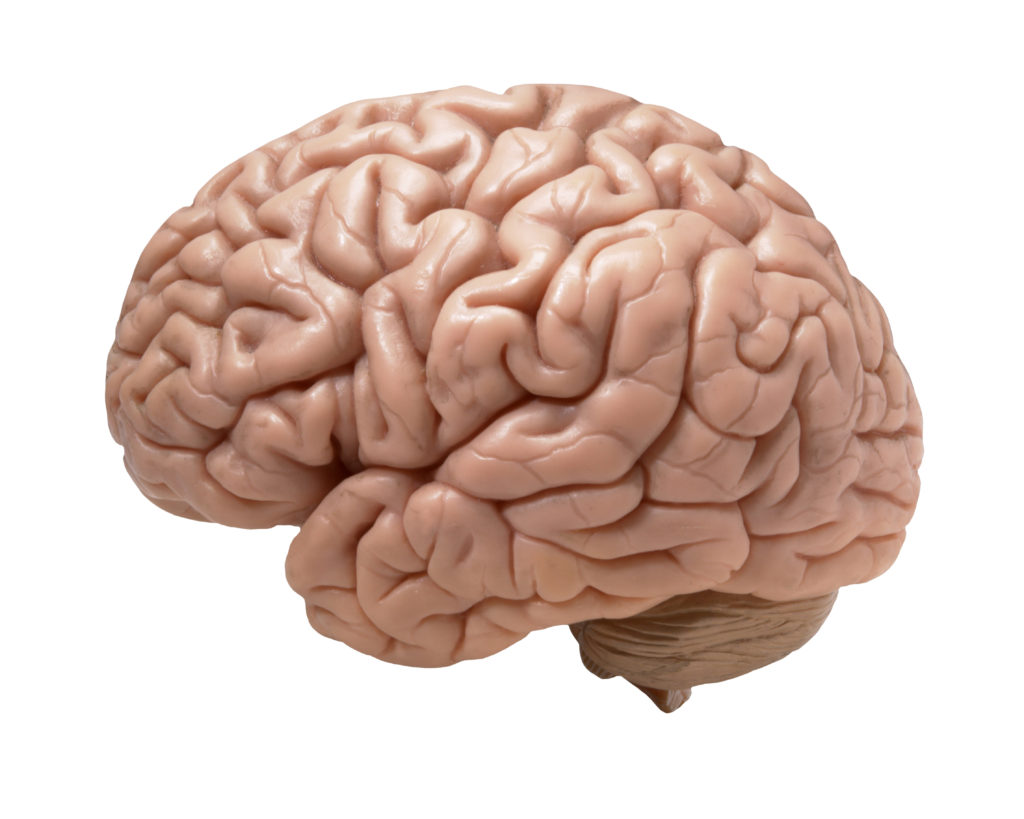
Prevalence
Alzheimer’s disease affects about 1% of people aged 65 to 69, 20% of those aged 85 to 89 years, and 40% of those 90 years to 95 years. In Canada, about 500,000 people have Alzheimer’s or a related disease. It is estimated that 1 in 8 men and 1 in 4 women will suffer during their existence. To the extent that women live longer, they are more likely to be achieved someday. Due to the extension of life expectancy, the disease is becoming more common. It is estimated that within 20 years, the number of sufferers will double in Canada.
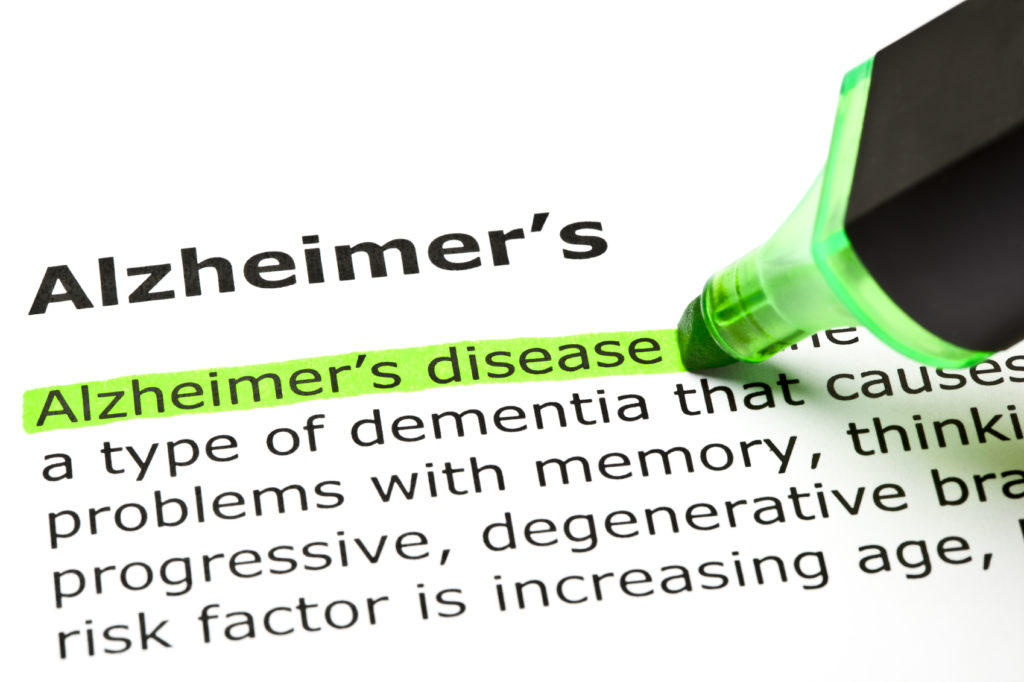
Involvement of the brain
Alzheimer’s disease is characterized by the appearance of very specific lesions that gradually invade the brain and destroy its cells, neurons. The neurons of the hippocampus, the area that controls memory, are the first affected. It is not yet known what causes the onset of these lesions. Dr. Alois Alzheimer, a German neurologist, is who the disease was named after in 1906. He is the first to describe these brain lesions at autopsy of dead woman dementia. He had observed in the brain thereof abnormal plaques and tangles of nerve cells now considered the major physiological signs of Alzheimer’s disease.
Here are two types of damages that appear in the brains of people:
- The excessive production and accumulation of beta-amyloid proteins in certain brain regions. These proteins form plaques, called amyloid plaques or neuritic plaques, which are associated with neuronal death.
- The “distortion” of certain structural proteins (called tau proteins). The way neurons are entangled is changed. This type of injury is called neurofibrillary tangles.
In these lesions is added inflammation that contributes to altering neurons. There is no treatment that can halt or reverse these pathological processes.

Causes
The causes of Alzheimer’s disease are not known. In the vast majority of cases, the disease appears due to a combination of risk factors. Aging is the main factor. Risk factors for cardiovascular diseases (hypertension, high cholesterol, obesity, diabetes, etc.) also appear to contribute to its development. It is also possible as infections or exposure to toxins play a role in some cases, but no conclusive evidence was obtained.
Genetic factors also play an important role in causing the disease. Thus, certain genes may increase the risk of suffering, although they are not directly the cause of the disease. Indeed, the researchers found that about 60% of people with Alzheimer’s disease are carriers of the gene apolipoprotein E4 or ApoE4. Another gene, SORL1, also seems to be often involved. However, several individuals are carriers of these genes and will never have the disease and, conversely, some people without these genes can develop the disease.
There are also hereditary forms of the disease but account for less than 5% of cases. Only 800 families have been identified worldwide. Children who have a parent with Alzheimer’s disease in its inherited form have 1 chance in 2 to have the disease themselves. Symptoms of familial appear early, sometimes before age 40. However, although several members of the same family are affected by this disease, it does not necessarily mean it is the hereditary form.
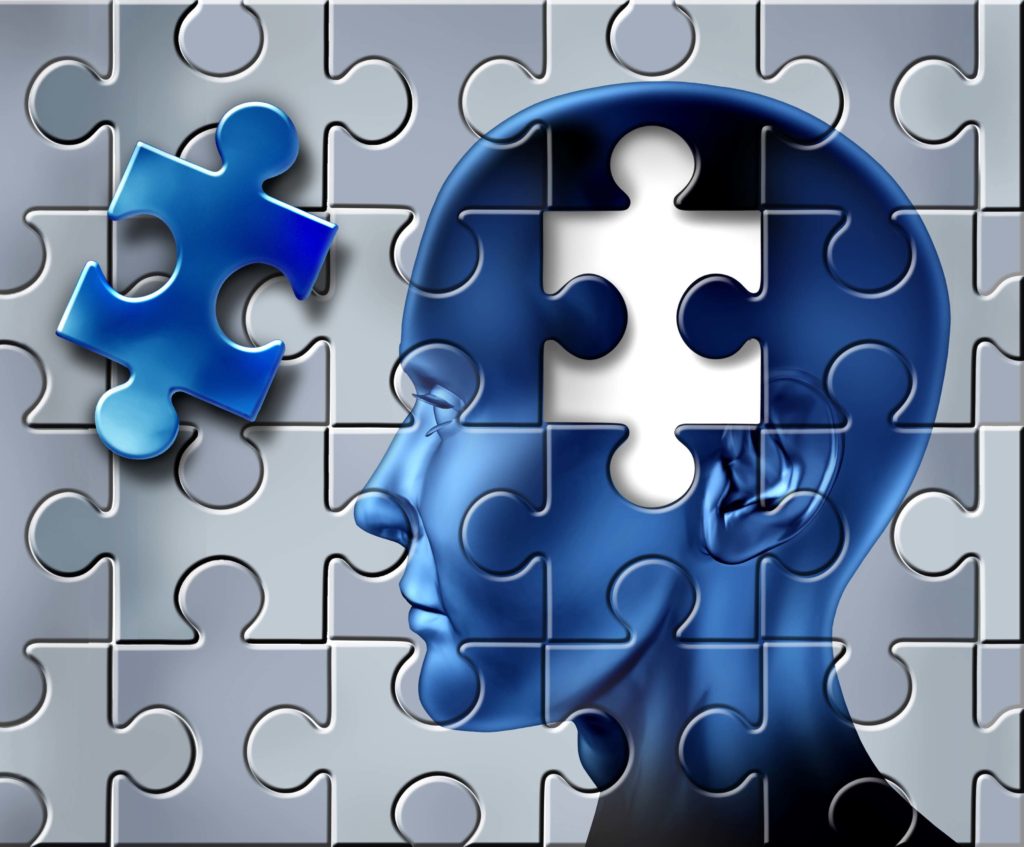
Disease progression
Alzheimer’s disease progresses over several years and its progression varies greatly from one person to another. We now know that the first lesions appear in the brain at least 10 to 15 years before the first symptoms.
They usually appear after the age of 60 years. On average, once the disease is present, life expectancy is 8 years to 12 years. As the disease occurs in old age, the more it tends to worsen quickly. When it occurs around age 60 or 65 years, life expectancy is about 12 years to 14 years; when it occurs later in life expectancy is only 5 years to 8 years. It is not possible to halt the progression of the disease.
Light Stadium. memory loss occurs occasionally. The short-term memory, that is to say, the ability to remember recent information (a new phone number, a list of words, etc.), is the most affected. Sufferers attempt to overcome their challenges by using checklists and their families. Mood swings and slight disorientation in space can also be observed. The person has more trouble finding words and follow the thread of a conversation.
At this stage, it is not clear whether Alzheimer’s disease. Over time, symptoms may remain stable or even decrease. The diagnosis is confirmed when memory problems are increasing and whether other cognitive functions deteriorate (language, object recognition, complex movements planning, etc.);
moderate stage. Memory disorders are amplified. The memories of youth and middle age become less accurate but are better preserved than the immediate memory. It is increasingly difficult for people to make choices; their judgment begins to be altered. For example, they gradually become more difficult to manage their money and plan their daily activities. Disorientation in space and time becomes more and more obvious (difficulty remembering the day, birthdays, etc.). The people have more and more difficulty expressing themselves verbally.
Between moderate and advanced stages, unusual behavior problems sometimes arise: for example, aggression, an atypical language, foul, or a change in personality traits. Regarding the advanced (or terminal) stage, at this point, the patient loses autonomy. Continuous monitoring or accommodation in a nursing home becomes necessary. Psychiatric problems can occur, including hallucinations and paranoid delusions, compounded by severe memory loss and disorientation.
Sleep problems are common. Patients neglect their personal hygiene, become incontinent, and struggling to feed themselves. If left unattended, they can wander for hours in vain. The person may die of another disease at any stage of Alzheimer’s. However, in its advanced stage, Alzheimer’s disease is a fatal disease like cancer. Most deaths are caused by pneumonia caused by difficulty swallowing. Patients may let into their airways and their lungs in saliva or part of what they eat or what they drink. This is a direct consequence of disease progression. Alzheimer’s disease is now the seventh leading cause of death in Canada, according to Statistics Canada.
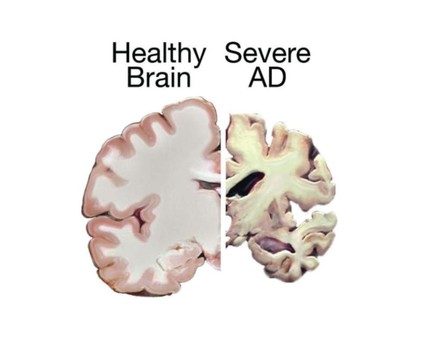
Diagnostic
Warning: it is not because you forgot the keys, a date, or the name of someone that you are suffering from Alzheimer’s disease. This occasional forgetfulness is normal at any age and is usually related to inattention. If they are common, they can mask depression or anxiety state. Only tests performed by a doctor can determine if you suffer from a real memory disorder. Often, it is the family members who care for their loved one and ask for a consultation.
For diagnosis, the doctor will use the results of several medical examinations. First, it asks the patient to learn more about the way his memory loss and other difficulties in the daily lives manifest. Tests to assess cognitive abilities are carried out, as appropriate: vision tests, writing, memory, problem-solving, etc. If memory disorder, even being attentive, patient performance in the test will be abnormal.
In some cases, various medical tests may be performed to rule out the possibility that the symptoms are caused by another health problem (a vitamin B12 deficiency, a malfunction of the thyroid gland, stroke, depression, etc.). If deemed necessary, the doctor may also advise the patient to have a brain imaging examination (preferably an MRI, magnetic resonance imaging) to observe the structure and activity of the different areas of his brain. The imaging can highlight the volume loss (atrophy) of certain brain areas, characteristic of neuron degeneration.
The hope of an early diagnosis
Much research is underway worldwide to develop tools to diagnose the disease at an earlier stage, when memory loss is mild or even before symptoms appear. Indeed, the disease develops insidiously well before symptoms of dementia appear. Several tests, still experimental, show that it is possible to get an early diagnosis: memory tests, brain imaging tests, or analyzes Blood or cerebrospinal fluid.
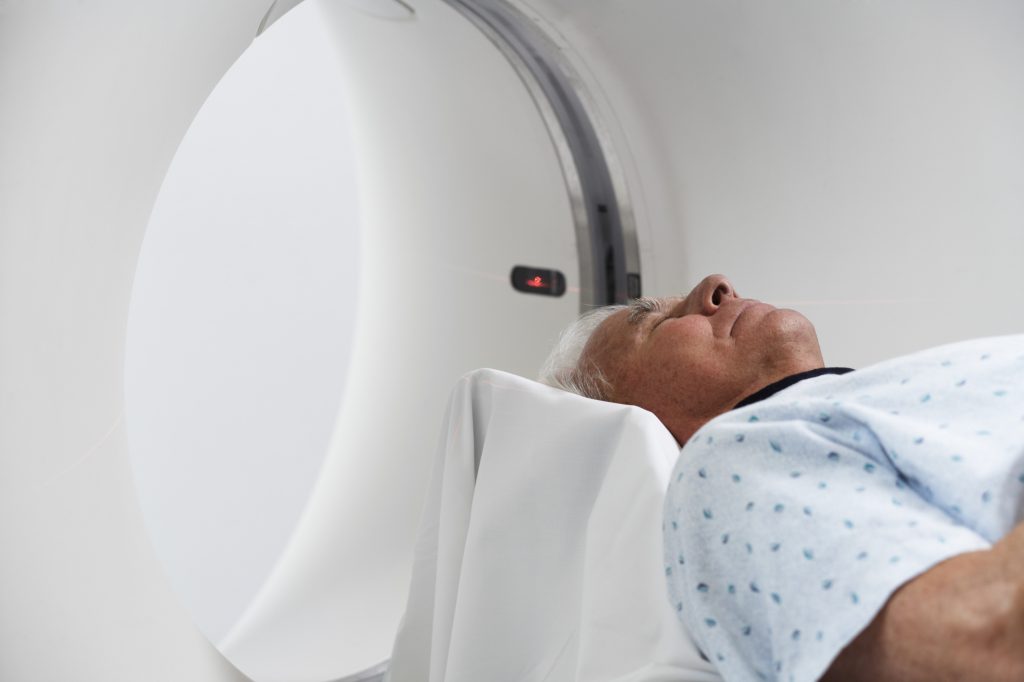
Symptoms of Alzheimer’s disease
- Impaired short-term memory (the name of new people you met, event hours or days before, etc.)
- Difficulty retaining new information
- Difficulty performing familiar tasks ( key doors, taking medication, find objects, etc.)
- Language difficulties or aphasia (difficulty finding words, less understandable speech, use of invented or inappropriate words)
- Difficulty following a conversation, a train of thought
- Difficulty or inability to plan (meals, budget, etc.)
- A gradual loss of the sense of orientation in space and time (hard to find on the day of the week, remember the season, anniversary dates, time of day, inability to find your way to familiar places, etc.)
- Troubles gestures or apraxia (difficulty in writing, buttoning a jacket, using everyday objects, etc.)
- Difficulty understanding abstract concepts and follow the reasoning
- Difficulty recognizing objects and faces close (agnosia)
- Progressive impairment of long-term memory (loss of childhood memories and adult)
- Changes in mood or behavior, sometimes aggressiveness or delirium
- Personality changes
- A progressive loss of autonomy

People at risk
- People aged 60 and over. Age is the main risk factor: the risk of developing the disease doubles every 5 years from 65 years
- Women (because they live longer than men)
- People who have a parent, brother, or sister with Alzheimer’s disease. Their risk of developing it in turn has increased from 10% to 30% relative to the rest of the population
- People with a parent suffering from an inherited familial form of Alzheimer’s disease. Children with an affected parent have a 50% chance of having the disease themselves;
- People of Hispanic and African American descent are more likely to have the disease (up to 2 times).

Risk factors
The most important factors:
Minor factors:
- Severe head trauma with loss of consciousness (occurring, for example, to boxers)
- Obesity
- A personal history of depression

Can we prevent it?
Currently, there are no clearly effective means in preventing Alzheimer’s disease. Some measures, however, appear to help preserve cognition and reduce the risk of developing the disease. Here are the most studied.
Preventive measures at the stage of research
It is possible to reduce the risk of suffering from Alzheimer’s disease by paying attention to the person’s lifestyle (healthy diet, physical exercise, etc.) and avoiding certain risk factors, like high blood pressure, diabetes, high cholesterol level, and smoking.
Hormone replacement therapy in women at the age of menopause or anti-inflammatory drug intake (such as aspirin and ibuprofen) may provide some protection against Alzheimer’s disease, according to studies population but prospective studies on this subject were negative.
1. Food
Various studies have been conducted to determine if a particular diet could prevent Alzheimer’s disease by delaying aging. Here are three avenues being explored:
The Mediterranean diet
This type of diet typical of the countries bordering the Mediterranean protects against cardiovascular disease and improving life expectancy. It is distinguished in particular by high consumption of olive oil, fruit, vegetables, and fish. The diet may help prevent Alzheimer’s disease. A prospective study conducted in 2006 among 2,258 Americans indeed indicates that people whose diet is closest to the Mediterranean diet are less likely to suffer from Alzheimer’s disease. The same research team also noticed that this type of diet reduces mortality associated with the disease.
These observations were confirmed in 2009 by a study of a cohort of 1,796 French people aged 65 and over. The study found that the Mediterranean diet is associated with less cognitive decline. Scientists explain in part the protective effect on neurons by its high content of antioxidants. The eicosapentaenoic acid (EPA), an omega-3 fatty acid found in fish, appears to be particularly protective.
Caloric restriction
A low-calorie diet delays aging and increase life expectancy. Scientists wanted to know if the number of calories ingested daily influenced the risk of developing Alzheimer’s disease. On the occasion of a prospective study with a duration of years 4-12, published in 2002, American researchers collected data on the dietary intake of 980 people aged 75 years on average. During the study, 242 people developed Alzheimer’s disease. The subjects who consumed the most calories and had a genetic makeup that predisposes them to the disease (they were carriers of the ApoE4 gene) were more affected than those who took the least amount of calories. Studies on animals suggest that calorie restriction increases the resistance of brain neurons in Alzheimer’s disease, Parkinson’s disease, and stroke. It also limits the normal neuronal loss associated with the Age;
A diet rich in antioxidants
Many studies confirm that antioxidants reduce the harmful effects of free radicals on neurons. Although it is not yet enough evidence to recommend a specific diet to prevent Alzheimer’s disease, according to the authors of a review of scientific literature, certain antioxidant-rich foods should be preferred. The authors are targeting food rich in folic acid, vitamin B6, and vitamin B12.

2. Physical activity
The benefit of regular physical activity for the prevention of dementia and cognitive decline was shown by several recent epidemiological studies and clinical trials. One of them showed that a moderate physical training program at home (3 sessions of 50 minutes per week, or 20 minutes of walking a day, for 24 weeks), possible to improve cognitive performance people with memory disorders. Moreover, adults practicing physical activities regularly appear less frequently affected by Alzheimer’s disease.

3. mental training
Several recent prospective studies have shown that people regularly engaged in stimulating mental activities (reading, learning, memory games, etc.), regardless of their age, are less likely to suffer from dementia. One example, the case of the famous Nun Study, an epidemiological study of aging and Alzheimer’s disease. This study is conducted since 1986 with 678 nuns of the order of the School Sisters of Notre Dame, a community where the average age is 85 years and where several sisters over 90 years. Among these nuns, who lead a healthy life, have a good diet and little stress, the rate of Alzheimer’s disease is significantly lower than that of the general population. Significantly, many of them are highly educated and engaged in very demanding intellectual activities for their age.
So that keeping an active mind throughout the course of his life favors the maintenance and growth of connections between neurons, delaying dementia. Furthermore, some believe that a high degree of education helps them succeed more easily cognitive tests used to diagnose Alzheimer’s disease. This would compensate for the longer effects on the disease.
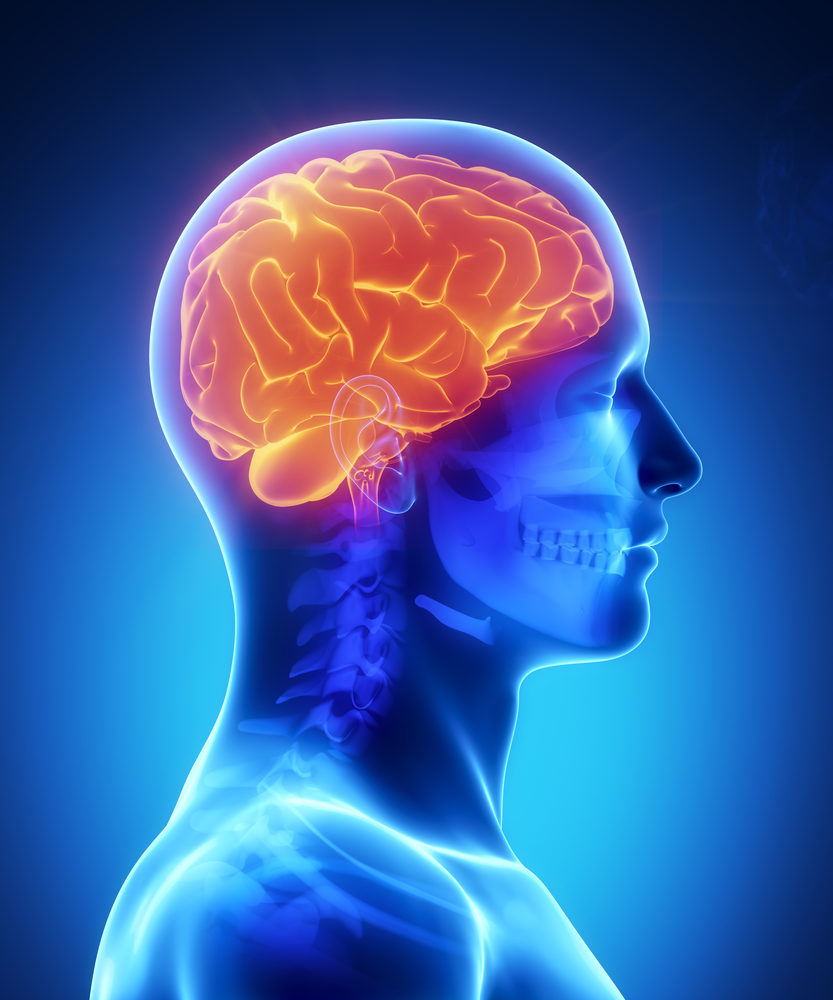
Medical treatment of Alzheimer’s disease
To date, there is no cure for Alzheimer’s disease. However, many drugs are in development and are bearers of hope. Therapeutic approaches that are currently in the research stage, aim to address the pathological process of the disease in the hope of a cure or stop it. In addition, there are drugs that reduce symptoms and improve, to some extent and cognitive functioning. The effectiveness of treatment is assessed by the doctor after 3-6 months. If necessary, the treatment will be altered. For now, treatment benefits are modest and drugs do not prevent the disease from progressing.
1. Pharmaceuticals
The following drugs are prescription. We can not know a priori which best suits the patient. Sometimes it takes a few months to find the appropriate treatment. According to studies, after 1 year of medication, 40% see their condition improve, 40% stable condition and 20% feel no effect.
Cholinesterase inhibitors
They are mainly used to treat mild to moderate symptoms. This family of drugs helps to increase acetylcholine concentration in certain brain regions (by decreasing its destruction). Acetylcholine helps the transmission of nerve impulses between neurons. It was noted that people with Alzheimer’s disease have lower amounts of acetylcholine in the brain because the destruction of nerve cells reduced the production of this neurotransmitter.
In the Canadian market, there are currently three cholinesterase inhibitors (the enzyme that destroys acetylcholine):
- Donepezil or E2020 (Aricept): It is taken in the form of tablets. It reduces mild, moderate, and advanced disease
- Rivastigmine (Exelon): Since February 2008, it is also available as a skin patch: the drug is absorbed slowly by the body for 24 hours. Rivastigmine is for patients who have mild or moderate symptoms
- Galantamine hydrobromide (Reminyl®): It is sold as a tablet taken once daily in the case of mild or moderate symptoms.
These drugs lose their effectiveness over time since neurons still produce less acetylcholine. Moreover, they can cause side effects such as nausea and vomiting, loss of appetite, and stomach pain. In this case, it is important to see your doctor, who will adjust the dose if necessary.
In the United States and France, tacrine (Cognex®) is used as a cholinesterase inhibitor. However, it can cause serious side effects and is not approved in Canada.
NMDA receptor antagonist
Since 2004, memantine hydrochloride (Ebixa) is given to relieve moderate to severe disease symptoms. This molecule acts by binding to the NMDA receptors (N-methyl-D-aspartate) receptors located on brain neurons. It thus takes the place of glutamate that, when present in large quantities in the neurons of the environment contributes to the disease. There is no indication, however, that the drug slows the degeneration of neurons.

Current research
Significant efforts are invested in research for new drugs. The main objectives are:
- To destroy the plaques of beta-amyloid proteins, through the injection of antibodies able to remove them. These plates are, in fact, one of the most important brain damage diseases. Such an antibody has been developed (the name of the molecule is bapineuzumab) and is undergoing clinical evaluation in people with the disease. This approach is called the “therapeutic vaccine”. Another solution would be tested to activate certain brain cells (microglia) for they remove the plates in question.
- To replace neurons: The scientific community has great hopes on the replacement, using transplantation of neurons destroyed by the disease. Today, researchers can create cells that resemble neurons from stem cells obtained from human skin. However, the method is not quite the point. It does not allow to create neurons that possess all the properties of “natural” neurons.

2. Physical exercise
Doctors are urging people suffering from Alzheimer’s disease to exercise. It improves strength, endurance, cardiovascular health, sleep, blood flow, and mood, and increases the dynamism and energy level. Moreover, physical exercise is particularly beneficial for people with this disease:
- It helps to keep the motor skills
- It gives a sense of meaning and purpose
- It exerts a calming effect
- It keeps the energy level, flexibility, and balance
- It reduces the risk of serious injury if dropped
- People who care for the sick can kill two birds with one stone by practicing along with their patients

3. social support
Considered as a component of treatment, social support for patients is crucial. Doctors advise various strategies for families and caregivers of patients.
- Make regular visits to patients to offer support according to their needs
- They provide checklists
- Create a stable life structure and quiet space in the house
- Establish a bedtime ritual
- Ensure that their immediate environments present little danger
- Ensure they always in their pocket a card (or bracelet) with an indication of their health, and phone numbers in case they go astray.


